
|
|
|
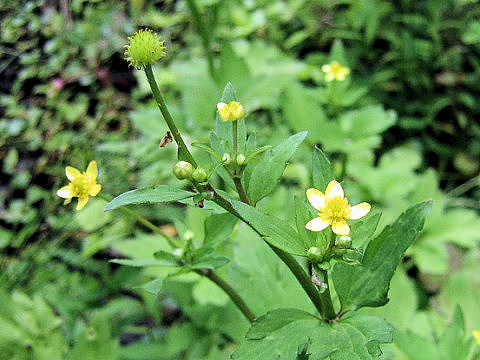 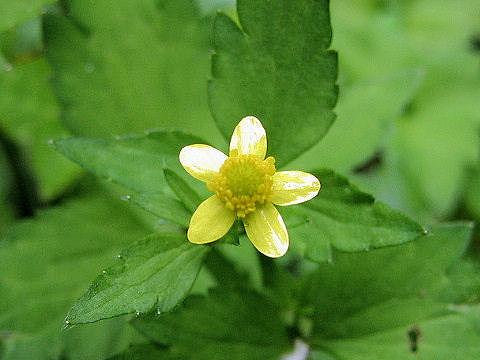 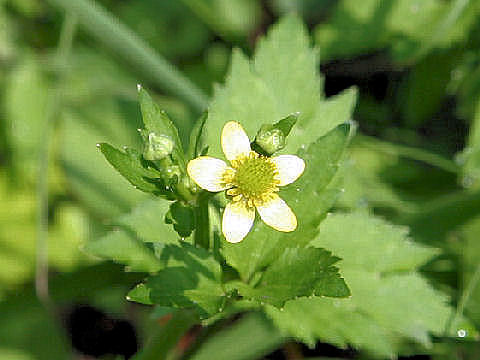 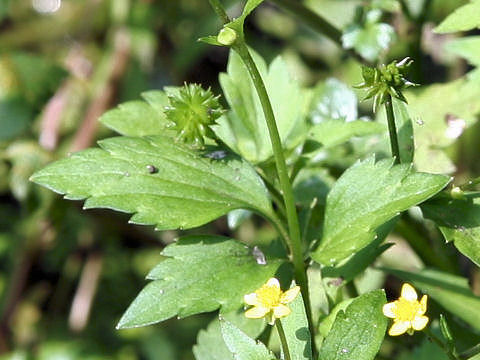 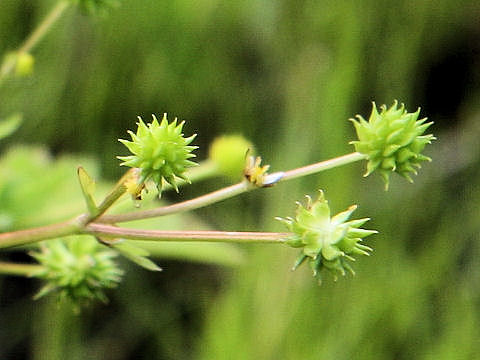 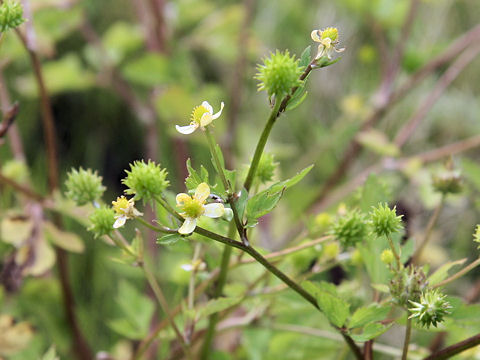 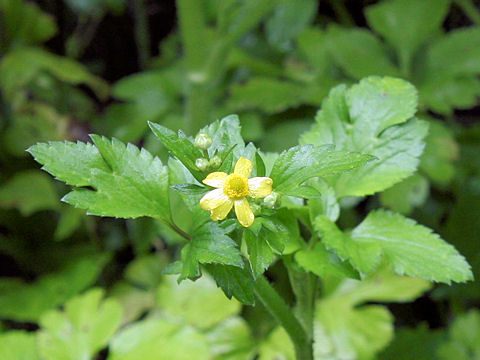 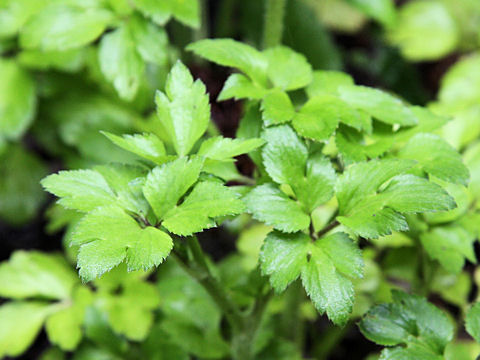 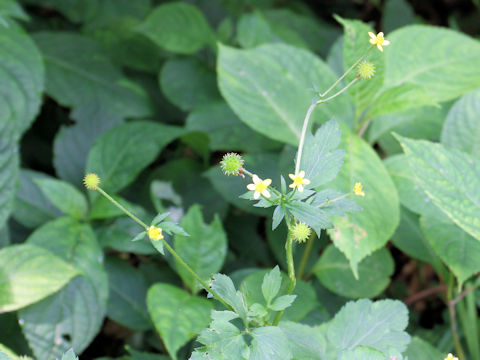 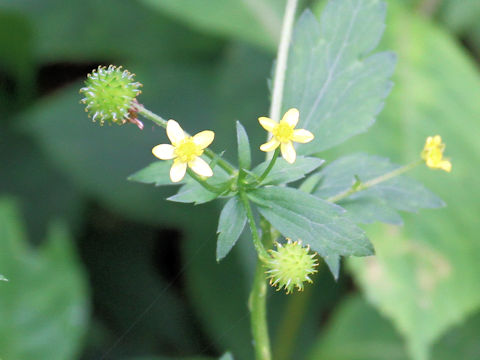 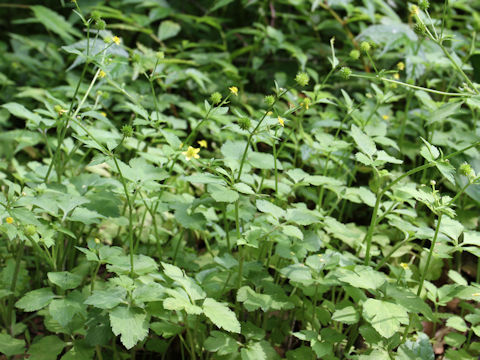 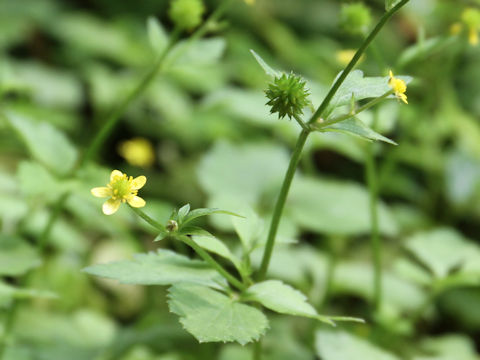 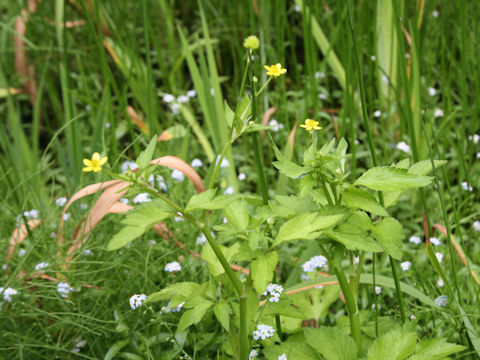 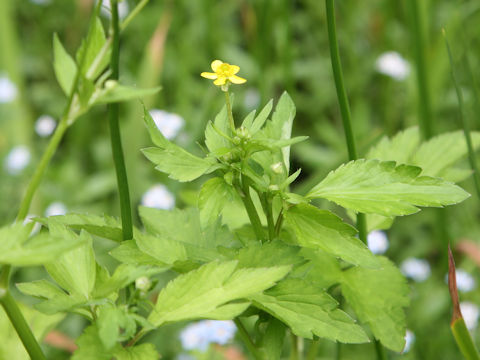 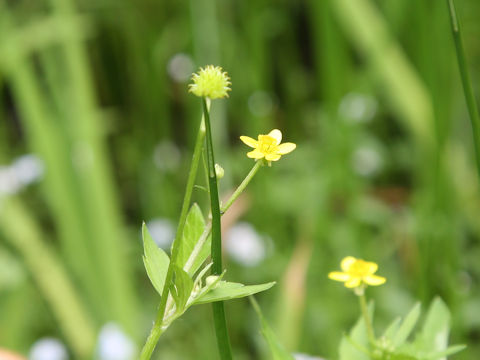 |
|
|
|
わが国の各地をはじめ、台湾や朝鮮半島、中国に分布しています。湿り気のある道端や田んぼの畔、溝のそばなど生え、高さは30〜50センチになります。葉は3出複葉で小葉はさらに3裂します。4月から7月ごろ、小さな黄色い花を咲かせます。集合果は扁平な球形で、花柱の部分が巻いています。「けきつねのぼたん」に似ていますが、小葉の切れ込みが浅く、鋸歯があまり尖りません。和名はこの葉が「ぼたん(牡丹)」に似ていることから。台湾華語では「鉤柱毛茛」、中国名では「鉤柱毛茛(gou zhu mao gen)。 |
|
|
キンポウゲ科キンポウゲ属の多年草で、学名は Ranunculus silerifolius。英名はありません。 |
|
|
The "Kitsune-no-botan" (Ranunculus silerifolius) belongs to Ranunculaceae (the Buttercup family). It is a perennial herb that is distributed all over Japan, as well as Taiwan, the Korean Peninsula and China. This herb grows in waste roadsides, rice field linches or along ditches and can reach 30-50 cm in height. The leaves are trifoliate compound and the leaflests are trilobate. The small yellow flowers are borne from April to July. The fruits are flat globose aggregate with curled styles. It is resemble to "Ke-kitsune-no-botan" (Ranunculus cantoniensis) and defined that the leaflets are diveded into shallow lobes and not too acute edges. The Japanese name comes from the similarity of its leaves to those of the "botan" (peony). In Taiwanese Chinese, it is called "鉤柱毛茛", and the Chinese name is "鉤柱毛茛" (gou zhu mao gen). |
|
|
[上・中1] 秋田県藤里町太良「駒ヶ岳」にて、2005年07月17日撮影。 [中2・中3] 大阪府四條畷市逢阪「清滝峠」にて、2006年07月15日撮影。 [中4・中5] 岐阜県八百津町久田見にて、2007年06月07日撮影。 [中6・中7] 山形県小国町「温身平」にて、2008年07月12日撮影。 [中8〜中11] 同上にて、2019年07月26日撮影。 [中12〜13・下] 岩手県盛岡市繋「尾入野湿生植物園」にて、2022年06月27日撮影。 |

|
|
Shu Suehiro |